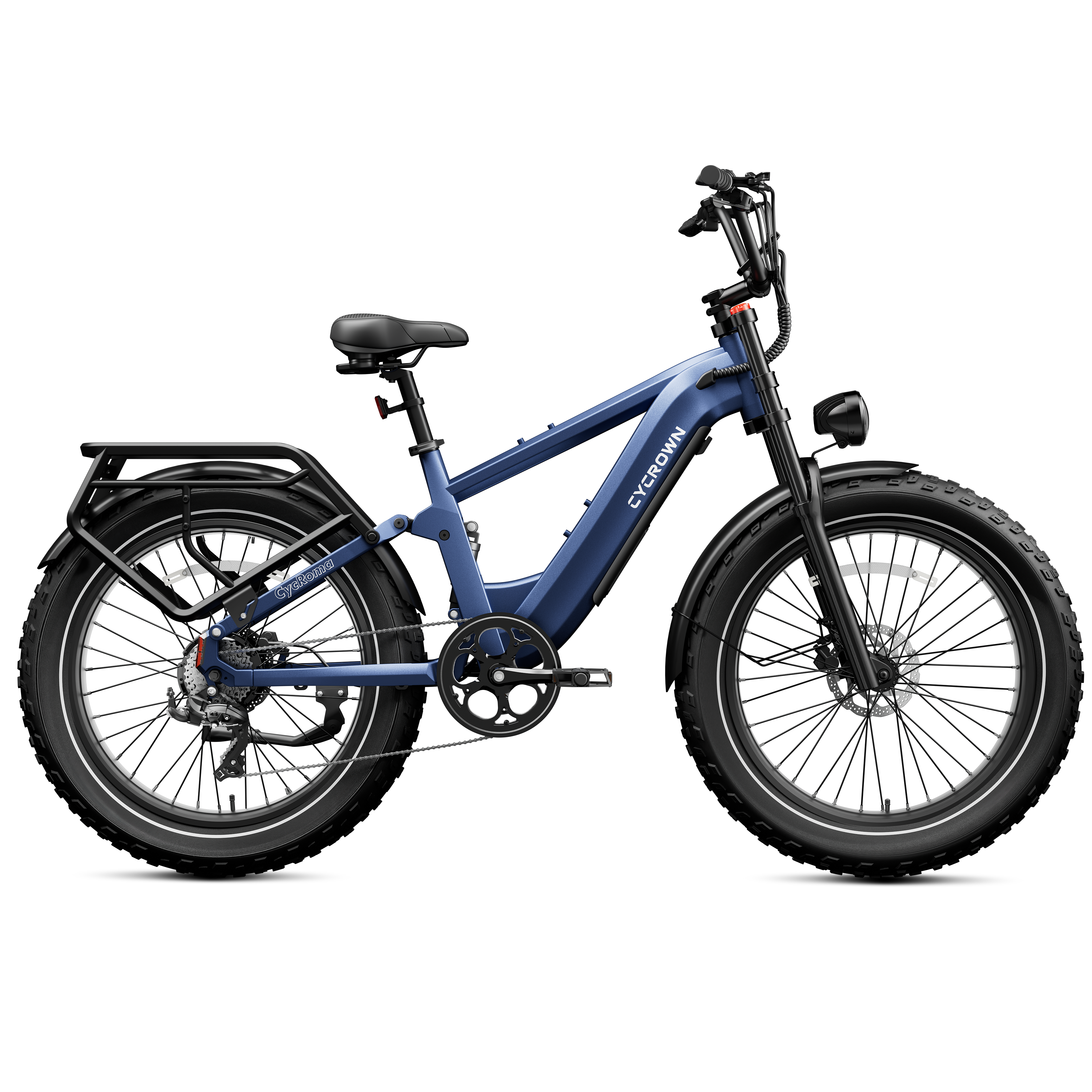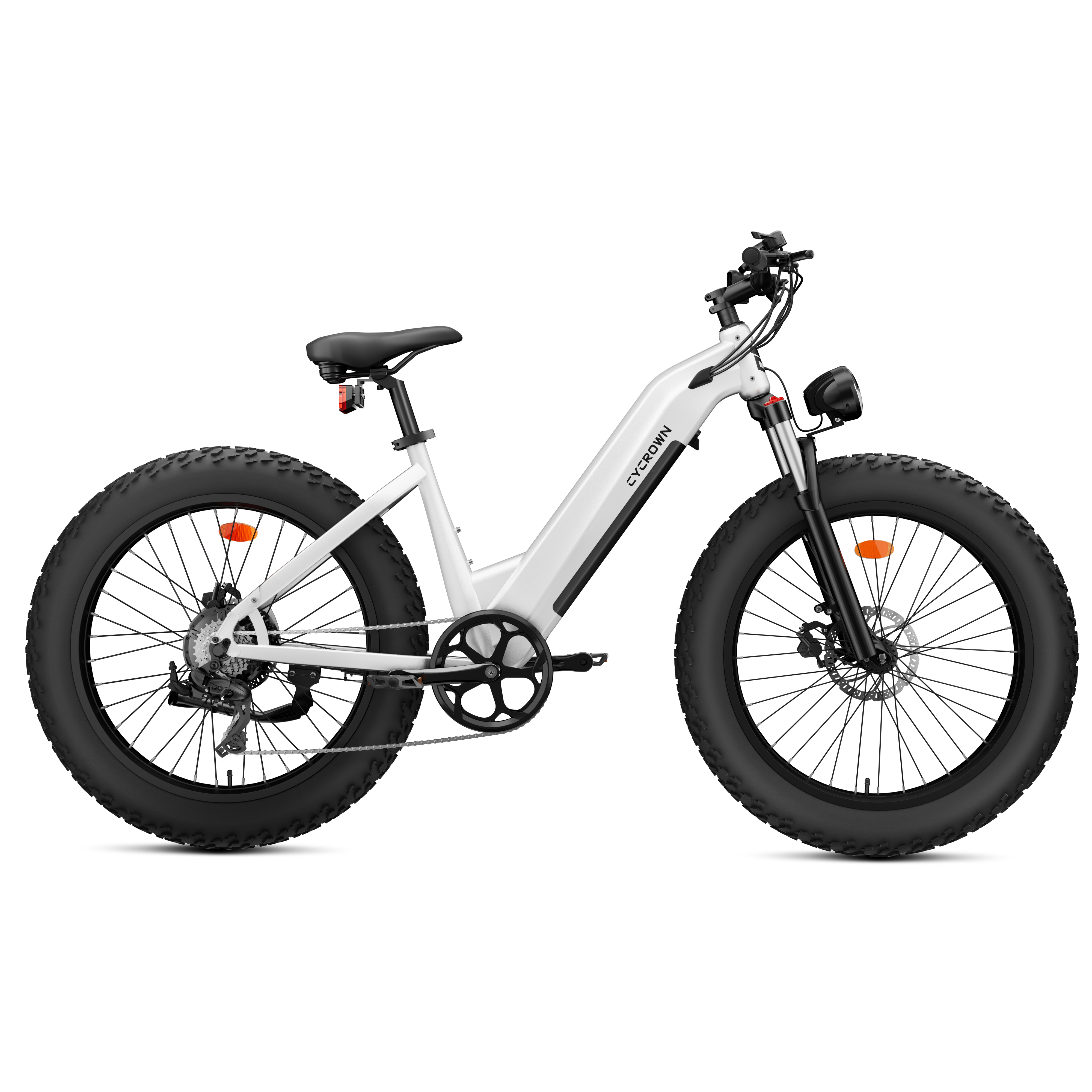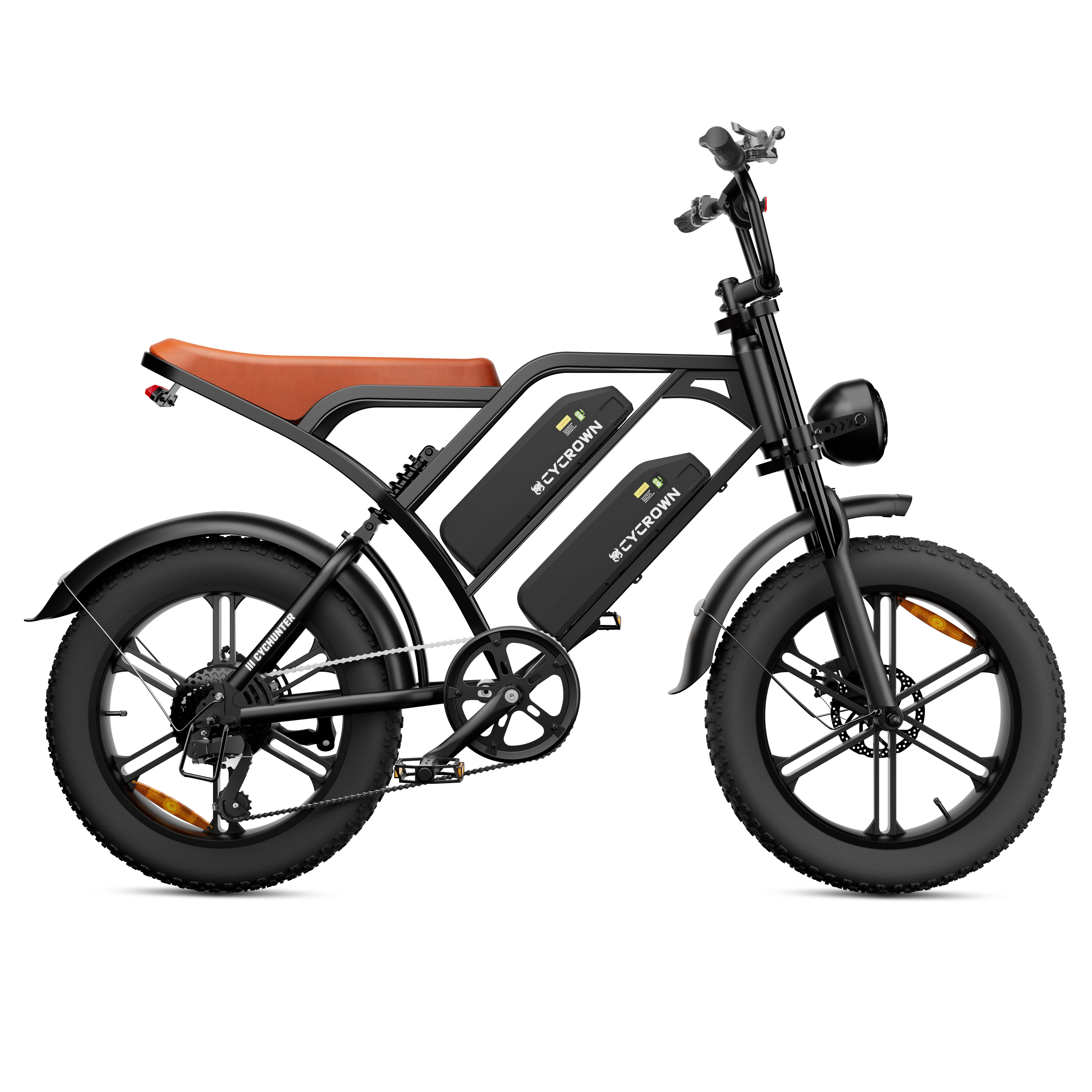Curious on how to remove bike pedals? Removing bike pedals may seem like a simple task, but it's one that often confounds even experienced cyclists due to the specific techniques required. This step-by-step guide will walk you through the process, ensuring you can confidently and safely remove your bike pedals, whether you're swapping them for a fresh pair or packing your bike for transport.
We'll cover everything from the tools you need to the direction in which you turn the wrench, providing clear instructions and expert tips to make the task hassle-free. Knowing how to remove bike pedals is an essential skill for any cyclist, and with this guide, you'll master it in no time. Let's get your bike ready for its next evolution or adventure with ease.
Understanding Pedal Mechanics
As a rider, it's important to understand the mechanics behind your bike pedals. In this section, we will discuss the pedal thread direction and types, as well as the different types of pedals available in the market.
Pedal Thread Direction and Types
Pedals are attached to the crank arms via threads on the pedal spindle. The threads can either be standard or reverse, depending on the manufacturer's design. It's essential to know the thread direction of your pedals to ensure that you don't accidentally loosen them while riding.
Most pedals have a standard thread, which is tightened in a clockwise direction on the right pedal and an anti-clockwise direction on the left pedal. However, some manufacturers use reverse threads, which are tightened in the opposite direction.
To remove pedals with a standard thread, you need to turn the pedal spindle anti-clockwise on the right pedal and clockwise on the left pedal. On the other hand, pedals with a reverse thread require you to turn the spindle in the opposite direction.
Pedal Types: Clipless vs. Flat Pedals
Pedals come in two main types: clipless pedals and flat pedals. Clipless pedals are designed to attach to cleats on the bottom of your cycling shoes, providing a secure connection between your feet and the pedals. They offer better power transfer and control, making them popular among road cyclists, mountain bikers, and triathletes.
Flat pedals, on the other hand, have a flat surface and no attachment mechanism, allowing you to ride with any type of shoe. They are popular among casual riders, commuters, and downhill mountain bikers who require quick foot placement and easy disengagement.
Guide on How To Remove Bike Pedals
1. Get the Correct Tools
Before you begin removing your bike pedals, make sure you have the correct tools for the job. The tools required will depend on the type of pedals you have, but most pedals require either a pedal wrench or an Allen key.
If your pedals have a hexagonal head, you will need an Allen key to remove them. The size of the Allen key required will depend on the size of the pedal, so make sure you have a set of Allen keys with a range of sizes.
If your pedals have a nut on the end, you will need a pedal wrench. A pedal wrench is a thin, long-handled wrench that is specifically designed for removing pedals. It is important to use a pedal wrench rather than a regular wrench, as a regular wrench may damage the pedal or the crank arm.
In addition to the specific tools required to remove your pedals, you may also need a 15mm wrench to remove the crank arm. This will depend on the type of bike you have and the design of the pedal.
2. Prepare Your Workspace
Before you begin removing your bike pedals, find a clear, flat area to work on, and ensure that you have enough space to move around comfortably.
It is also a good idea to lay down a clean, soft cloth to protect your bike frame and components from scratches or damage.
Finally, apply a small amount of grease to the threads of the pedal before re-installing it. This will help to prevent the pedal from seizing in the crank arm and make it easier to remove in the future.
3. Remove the Pedals
Removing bike pedals may seem daunting, but with the right tools and techniques, it can be a straightforward process. In this section, we will guide you through the steps to remove your bike pedals.
Positioning the Wrench and Crank Arm
First, position your bike so that the pedal you want to remove is facing upwards. Then, locate the flats on the pedal spindle and place your wrench onto them. For the right pedal, turn the wrench counter-clockwise, while for the left pedal, turn it clockwise.
Next, position the crank arm so that it is in a horizontal position, with the pedal you want to remove at the bottom. This will give you the leverage you need to loosen the pedal.
Applying the Correct Leverage
With the wrench in place and the crank arm positioned correctly, apply force to the wrench handle to loosen the pedal. It may take some effort, especially if the pedal has been on the bike for a long time.
If the pedal is particularly stubborn, you can use a longer wrench or a piece of pipe to increase your leverage. Just make sure not to use too much force, as this can damage the pedal or the crank arm.
4. Detach the Pedal from the Crank
Once the pedal is loose, you can remove it from the crank arm. For the right-hand pedal, turn it clockwise to remove it, while for the left-hand pedal, turn it counter-clockwise.
It's important to note that the left pedal has a reverse thread, which means that it tightens in the opposite direction to the right pedal. Make sure you turn it the correct way to avoid damaging the pedal or the crank arm.
With the pedal removed, you can now clean and inspect it for any damage or wear. You can also apply grease to the pedal threads before re-installing it on the bike.
5. Install the New Pedals
After successfully removing your old pedals, it's time to install new ones. Follow these steps for a smooth installation process.
Applying Grease to Threads
Before installing new pedals, apply a small amount of grease to the pedal threads. This will help prevent the pedals from seizing onto the crank arms and make it easier to remove them in the future. Apply a small amount of grease to the threads using a clean rag or your finger.
Thread and Tighten the New Pedals
-
Identify the right and left pedals. The right pedal has right-hand threads and the left pedal has left-hand threads. Look for the letters "R" and "L" on the pedals to help you identify them.
-
Start threading the new pedals into the crank arms by hand. Make sure the pedals are going in straight and not cross-threaded.
-
Use a pedal wrench or an Allen key to tighten the pedals. Make sure to tighten the pedals to the recommended torque specification, which can usually be found on the pedal or in the manufacturer's instructions. Over-tightening the pedals can damage the crank arms or strip the pedal threads.
-
Make sure the pedals are tightened securely by checking for any wobbling or looseness. If the pedals are loose, tighten them further until they are secure.
Remember to always use a torque wrench to ensure the pedals are tightened to the correct specification. Additionally, make sure to align the wrench flats with the crank arm to prevent damage to the pedal threads. With these simple steps, you can easily install new pedals and get back to enjoying your ride.
Post-Installation Checks and Maintenance
Ensuring Pedals are Securely Fitted
After installing new pedals on your bike, it is important to ensure that they are securely fitted. Loose pedals can cause serious accidents, so it is crucial to check them before riding. Here are a few steps to follow:
-
Use a pedal wrench to tighten the pedals. Make sure they are properly seated and tightened to the recommended torque. You can find the recommended torque in the manufacturer's instructions or online.
-
Once you have tightened the pedals, try to wiggle them with your hands. If they move, they are not tight enough. Repeat the tightening process until they are firmly in place.
-
Test ride your bike to make sure the pedals are secure. If you notice any wobbling or movement, stop and check them again.
Routine Pedal Maintenance Tips
To keep your pedals functioning properly, regular maintenance is essential. Here are a few tips for maintaining your pedals:
-
Clean your pedals regularly with a damp cloth. This will help prevent dirt and debris from building up and causing damage.
-
Lubricate the pedal threads with waterproof grease. This will help prevent rust and corrosion, and make it easier to remove the pedals in the future.
-
Check the bearings periodically for wear and tear. If you notice any grinding or clicking sounds, it may be time to replace the bearings.
- Inspect the pedals for any cracks or damage. If you notice any issues, replace the pedals immediately.
Conclusion
Congratulations, you now have the know-how to remove bike pedals like a pro! With this vital skill in your cycling toolkit, you're ready to tackle pedal replacement, upgrades, or bike maintenance with ease. Remember, a smooth ride starts with well-maintained equipment, and you're now equipped to ensure just that.
Looking to upgrade your pedals or in need of other quality parts? Visit our e-bike parts collection at Cycrown for a wide selection of top-notch cycling components. Keep your bike in prime condition and enhance your riding experience with the best parts on the market. Gear up for greatness today!
Frequently Asked Questions
How do you unscrew bike pedals?
To unscrew bike pedals, you need to turn the pedals anti-clockwise on the drive side. It is essential to place the bike on a level surface and use a pedal wrench or hex wrench to loosen the pedals. Make sure you have a good grip on the opposite crank arm for leverage while unscrewing the pedals.
What can I use instead of a pedal wrench?
If you do not have a pedal wrench, you can use a regular wrench or an adjustable wrench. However, make sure that the wrench fits the flats on the pedal's axle. You can also use a hex wrench if the pedals have hexagonal sockets.
Which way are pedals threaded?
The pedals on your bike are threaded differently on the left and right sides. The left pedal is reverse threaded, which means you need to turn it clockwise to loosen it. The right pedal is standard threaded, which means you need to turn it anti-clockwise to loosen it.
Which way do you loosen reverse thread?
To loosen a reverse-threaded pedal, turn it clockwise. Remember that the left pedal on your bike is reverse threaded.
Do you need a special tool to remove bike pedals?
To remove bike pedals, you need a pedal wrench or a hex wrench. Make sure the wrench fits the flats on the pedal's axle. If you don’t have these tools, you can use a regular wrench or an adjustable wrench.
What size wrench do I need for bike pedals?
The wrench size you need for bike pedals depends on the size of the flats on the pedal's axle. Most pedals have either 15mm or 9/16-inch flats. Make sure the wrench fits the flats on the pedal's axle to avoid damaging them.










